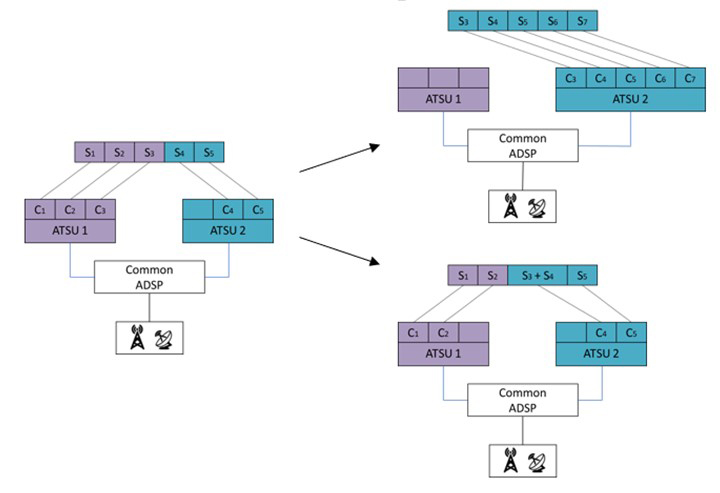PROVIDING SERVICES REMOTELY WILL TRANSFORM THE WAY AIR TRAFFIC SERVICES ARE DELIVERED
This Solution was formerly part of PJ.16-03 and PJ.15-09
The current rigid nature of Europe’s airspace infrastructure makes it difficult to delegate airspace amongst air traffic service units based on traffic demand or organisational needs such as day/night operations. The operations and procedures to manage these two delegations have been developed over the years and work well in very low or zero traffic conditions but are severely limited in their capabilities.
In fact, the present system lacks the means to transfer areas of responsibility between service units. Supported by appropriate technical Infrastructures to support the operational delegation and contingency use cases, some principles related to technical systems based on service-oriented architectures (SOA) must be considered for the virtual centre concept. This decouples the physical controller working position from the remote provision of ATM data and technical services such as flight data distribution and management.
SESAR is exploring the delegation of airspace in expected and planned situations - such as peak traffic load at fixed times - as well as unscheduled occurrences for example in cases of service degradation or failure. The solution is expected to lead to a cost optimisation for ANSPs, and to a capacity increase with the rationalisation of resources.
Delegation of airspace between service units may relate to an entire airspace or part of a larger airspace. The solution encompasses the operational thread which aims at defining and validating the different types of delegation of airspace, and a technical thread which aims at specifying the impacts of the operational thread on the services defined in the virtual centre concept.
The aim is to enable greater flexibility when it comes to organising ATC operations and, in doing so, seamless and more cost-efficient service provision for airspace users. Other benefits are the flexible use of resources, which in turn leads to improved overall performance.
BENEFITS
Increased flexibility and operational efficiency
Improved cost efficiency
Increased resilience in terms of ATM service provision
Datapack

